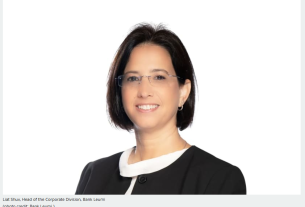Why did central bank regulators from Colombia and Brazil travel a combined 12,556 miles (20,207 kilometers) to Kigali, Rwanda? The answer lies in a shared mission: to learn and exchange insights on gender-disaggregated data. Spearheaded by CGAP and the National Bank of Rwanda (NBR), this meeting stemmed from an ongoing collaboration to unlock Rwanda’s gender data potential in the financial sector.
To this end, CGAP and NBR hosted a workshop with financial sector regulators from Banco de la Republica Colombia, Banco Central do Brazil, and Bank Negara Malaysia (BNM). Together, they explored strategies to collect and utilize gender-disaggregated data to enhance women’s financial inclusion. The workshop drew a diverse audience including National Bank of Rwanda staff, Rwandan authorities, financial sector representatives, market facilitators, international organizations, and donors. Presentations showcased various methodologies, innovative solutions, and valuable insights. Some key lessons about regulator-to-regulator peer learning in the context of gender data in the financial sector emerged.
There are multiple pathways to collecting and using gender-disaggregated data
In Brazil, much of the analytics around how various segments of society (including different genders) access, use, and benefit from financial services, derives from the central bank’s mandate to promote the efficiency of the financial sector. Efficiency here is interpreted as the financial sector serving all people. In Colombia, by contrast, the gender analysis shared by the central bank was conducted to fulfill its mandate to promote financial stability. Using data from the Financial Superintendency, the central bank can identify segments (including different genders) that may be in financial trouble – or shocks whose impact could spread throughout the financial system. In both Malaysia and Rwanda, the central bank has a direct mandate on financial inclusion, and a strong gender equality goal to support women’s participation in the economy. Despite these different mandates, all four countries are collecting and using gender data in creative ways to further inclusion. When financial sector authorities are embarking on developing a strategy for collecting and using gender-disaggregated data, looking to different experiences like these can help find a solution based on the country’s context.
Peer learning can inspire new indicators
Regulators shared examples of indicators they’ve developed to generate insights on gender gaps and sub-optimal financial inclusion outcomes for women, despite limited data availability. For example, Colombia presented a great case study on credit data analysis. Looking at loan data by type of credit, together with the proportion of clients by gender (male/female), interest rate differentials, and comparable nonperforming loans, the Central Bank of Colombia was able to identify certain differentiated trends by gender. This served as a starting point for questions related to gender gaps that warrant further exploration: Why do men get preferential interest rates, despite women’s lower rates of nonperforming loans? Is it provider bias? Is further disaggregation and analysis required to see if this gap is driven by other factors, such as income and collateral? Colombia’s experience serves as a great example for other central banks. It shows how data can be sliced to create new indicators that reveal trends that are worth exploring.
Peer learning can show how supply- and demand-side data complement each other
The synergies between demand-side data (such as data collected from national surveys) and supply-side data (such as administrative and transactional data collected by providers and reported to the supervisor) were a recurring theme during the workshop. For example, in Brazil, demand-side data can inform responses to red flags set off by supply-side data analytics. Brazil’s demand-side surveys collect consumer identification numbers (with consent), thus results can be cross-referenced with analytics from supply-side databases. What regulators found was that 52% of consumers they had marked as ‘risky debtors’ for the past two months (based on patterns identified from provider-reported data) – did not deem themselves to be particularly financially stressed. People were over-confident in their resilience, prompting the central bank to double down on efforts in financial literacy and financial education. Brazil’s experience is a lesson for all central banks on the need to cross-reference demand-side and supply-side data where both are available to ensure issues can be accurately identified and appropriately tackled.
There are many creative ways to source data
Peer-to-peer sharing can help spur creative sourcing and use of data. Not all countries have a comprehensive electronic data warehouse in the central bank that provides granular information on accounts and transactions – in fact, Rwanda is the exception rather than the rule in this regard. Malaysia conducts an annual financial inclusion survey of providers to collect its relevant data on deposits, insurance, payments, and access points – but is also able to supplement with data from the central credit reference information system and cross reference demographic data with the national ID database.
As valuable as this experience was, it isn’t feasible for every central bank looking to better deploy gender data to fly thousands of miles across the world to learn from their peers. Luckily, workshops aren’t the only way to foster peer learning. CGAP is currently collating findings from countries that have made progress in the collection and use of supply-side gender-disaggregated data in the financial sector. In the coming months, we will share these in a new report that will be shared widely and will, hopefully, serve as the basis for additional peer learning. Stay tuned!



